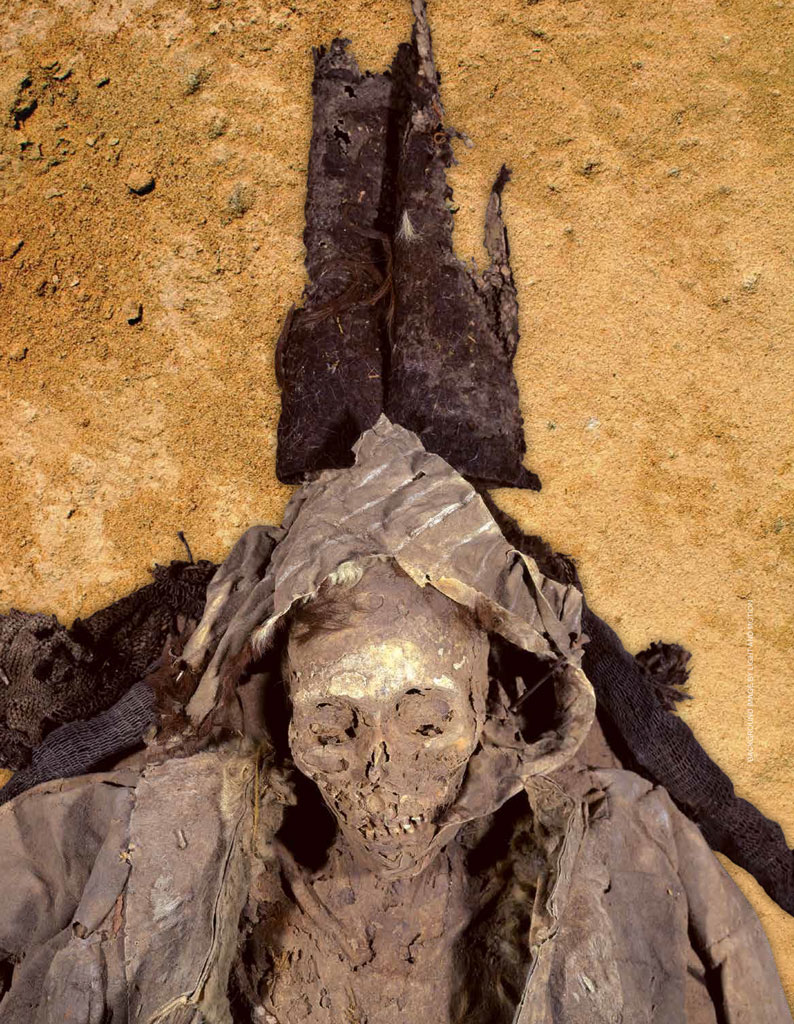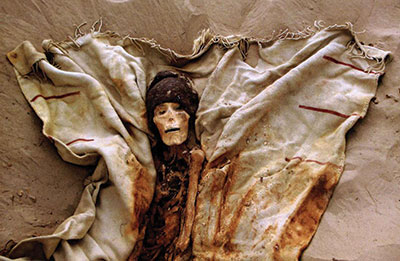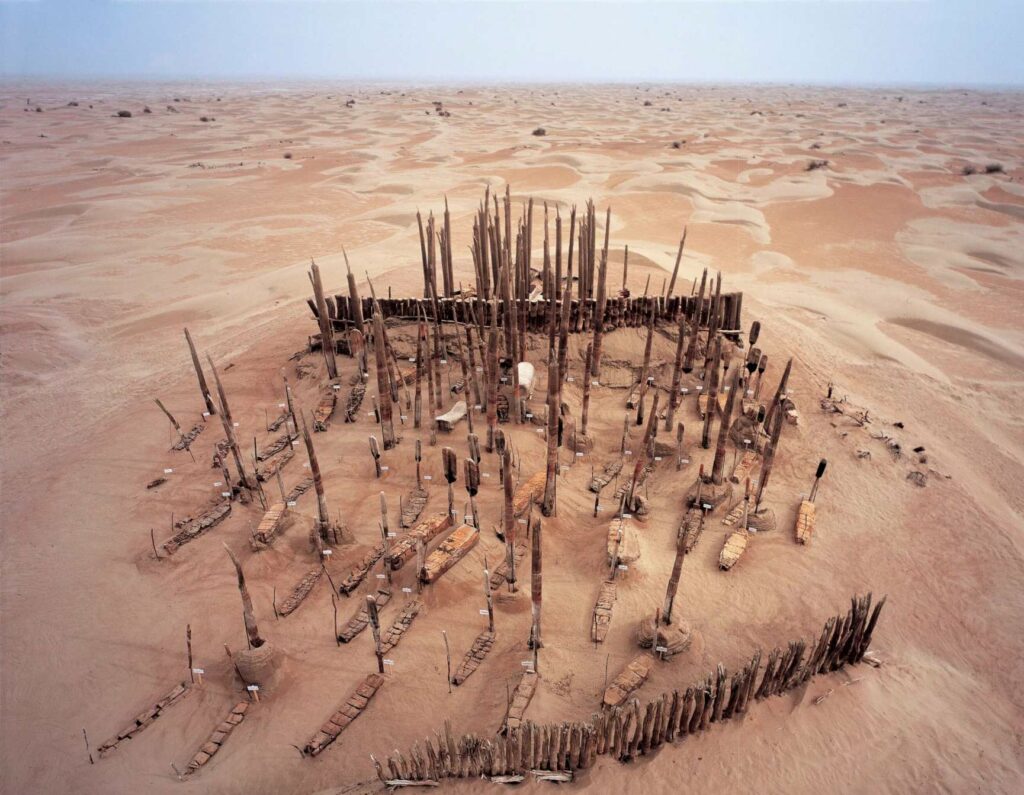
Subeshi is a lost city located near Kucha in the Taklamakan Desert in China’s Tarim Basin on the ancient Silk Road in the Xinjiang Uygur Autonomous Region. The city played a key role in the introduction of Buddhism to China.
Three female mummies of Subeshi were found wearing tall, pointed black hats of felted wool that resemble the stereotypical headgear of traditional witches, and dated to between the 4th and 2nd centuries BC They were located in a high gorge just to the east of the city of Turfan.
It has been suggested that one of the three, wearing a heavy glove, may indicate that she hunted with a raptor.

The headgear worn by the Iron-age mummies were fashioned from black felt, the steep spire tapering to a peak nearly 60cm (2ft) high.
The most intriguing mummies in ECA may be the “witches” of Subeshi, who wear very tall, pointed black hats that resemble the iconic headgear of their sisters in medieval Europe. Subeshi, dated to between the 4th and 2nd centuries BCE, is located in a high gorge just to the east of the important city of Turfan.
Historian and author Adrienne Mayor has recently suggested that the single heavy glove worn by one of the female mummies may indicate that she hunted with a raptor such as a golden eagle. A number of impressive male mummies have also been excavated at Subeshi, including a man who wears a felt helmet and another man whose chest has been stitched up with horse hair in what must be one of the oldest (4th century BCE) examples of surgery in the world.

This Witch of Subeshi wears a heavy glove on one hand, perhaps an indication she hunted with raptors. Photograph courtesy of Jeffery Newbury.





